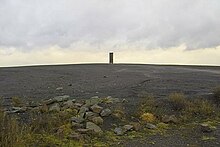More about Richard Serra
- All
- Info
- Shop
Works by Richard Serra

Contributor
Dubbed the “Man of Steel” by the New Yorker, Richard Serra is a no-nonsense large-scale sculptor who molded the art world around his little finger.
It all started in a shipyard in San Francisco where his father worked as a pipe-fitter. The shipyard became the basis of a reoccurring dream of Serra’s laying the groundwork for an obsession with metal. Later, Serra made two valiant efforts to support himself and his artistic fantasies. First, he worked in a steel mill, which pretty much sealed his artistic fate. And second, he started a furniture-moving business employing his friends Chuck Close, the great 20th century composer Philip Glass (who was also his studio assistant at one point), and actor/writer Spalding Gray...but moving right along.
Serra studied English literature at UC Berkeley and UC Santa Barbara before attending Yale Art School for his MFA where he was almost expelled for playing a prank on Robert Rauschenberg. He says about the incident, “Rauschenberg came up [to Yale] as a visiting critic. Being a bit sparky back then, I thought I’d see what he was made of. I found a chicken and tethered it to a rope and put it in this box on a pedestal… But when he lifted the box, the goddamn chicken flew up above him and started shitting everywhere. That incident sums up my attitude: I don’t give a shit but I care quite a lot.” This was only just the beginning of the turmoil that Serra would create in the art world.
In 1979, Serra had a run of the mill (lol) site-specific commission for the Federal Plaza in New York City. So naturally, Richard Serra did something extraordinary. He created Tilted Arc, a 120-foot long, 12-foot high wall of steel that diagonally sliced the courtyard in half, which really messed up people’s lives. People’s routes to work were drastically altered and they were forced to (God forbid) look up while walking into the office. Now you wouldn’t think that this would be that big of a deal but there was a petition signed by 1300 people to remove it, followed by death-threats against Serra and ultimately a lawsuit. Serra tried to defend his work, claiming that it was designed for that space and anywhere else it would be useless, but ultimately it was scrapped. Art appreciation be damned. New Yorkers gotta get to work.
His legacy has not been altered by those events, however. He is still a powerhouse of the American art scene, a Guggenheim Fellow, a Golden Lion Award recipient, has art displayed in the most prestigious galleries in the world and best of all is mentioned in the Vampire Weekend song, “White Sky.” How’s that for a resume?
Featured Content
Here is what Wikipedia says about Richard Serra


Richard Serra (November 2, 1938 – March 26, 2024) was an American artist known for his large-scale abstract sculptures made for site-specific landscape, urban, and architectural settings, and whose work has been primarily associated with Postminimalism. Described as "one of his era's greatest sculptors", Serra became notable for emphasizing the material qualities of his works and exploration of the relationship between the viewer, the work, and the site.
Serra pursued English literature at the University of California, Berkeley, before shifting to visual art. He graduated with a B.A. in English Literature from the University of California, Santa Barbara, in 1961, where he met influential muralists Rico Lebrun and Howard Warshaw. Supporting himself by working in steel mills, Serra's early exposure to industrial materials influenced his artistic trajectory. He continued his education at Yale University, earning a B.A. in Art History and an M.F.A. in 1964. While in Paris on a Yale fellowship in 1964, he befriended composer Philip Glass and explored Constantin Brâncuși's studio, both of which had a strong influence on his work. His time in Europe also catalyzed his subsequent shift from painting to sculpture.
From the mid-1960s onward, particularly after his move to New York City in 1966, Serra worked to radicalize and extend the definition of sculpture beginning with his early experiments with rubber, neon, and lead, to his large-scale steel works. His early works in New York, such as To Lift from 1967 and Thirty-Five Feet of Lead Rolled Up from 1968, reflected his fascination with industrial materials and the physical properties of his chosen mediums. His large-scale works, both in urban and natural landscapes, have reshaped public interactions with art and, at times, were also a source of controversy, such as that caused by his Tilted Arc in Manhattan in 1981. Serra was married to artist Nancy Graves between 1965 and 1970, and Clara Weyergraf between 1981 and his death in 2024.
Check out the full Wikipedia article about Richard Serra





















